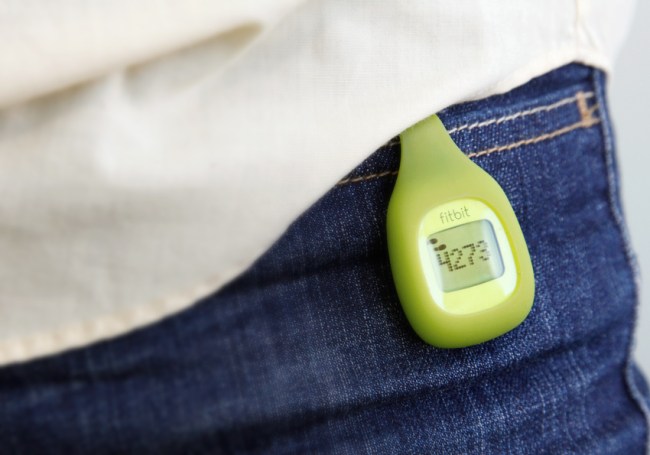
A funny thing happened to me at CES this year: I became a fan of a little-known technology that monitors what I do and reports it to my wife. Not only am I OK with this, it was my idea.
I give credit to my new “exercise dealer,” AMD CEO Rory Read, who got me hooked on a tiny device that’s changing the way I think about fitness. He had given devices to all of his family, and now they are all hooked on it. Apparently part of this new electronic virus is the need to spread it to our friends, so I’m going to share it with you. It could actually improve and even save your life, which seems like a fair tradeoff for being a bit more public about certain aspects of it.
Meet the FitBit
FitBit devices monitor all of your physical activity that crosses space, or seems like walking. That is to say, they will track and report the number of stairs you go up and down and do work with treadmills, but aren’t great with Stairmasters or Striders yet. They report this data to a personal website where you can invite friends and family to view the results. Not only can they review them, but they can compete with them. For instance, I watched Rory get concerned about his wife covering more ground than he was in meetings, then plot to use the stairs rather than the elevator in the hotel to catch up. Stairs count more than walking.
The most recent devices even track your sleep. Viewing the results can be a bit disturbing, especially if you think you actually sleep soundly all night. My wife’s unit revealed that she was waking up over 20 times every night, and as a result I’ve suddenly got a device on my nose to control snoring. You’d think if I could sleep through the snoring, she could – I’m closer to it after all – but apparently not. Thanks to my brilliance, I now go to sleep with my nostrils spread open like the Millennium Falcon is going to land in one of them. Strangely I do seem to be sleeping more deeply, which is something I suggest is only a coincidence.
In any case, the FitBit connects through your PC or phone wirelessly, then provides updates to the website so you can see the progress you’ve made. You tell the site things like what you are eating, and it can show progress towards health or weight-loss goals. But I think the biggest thing is that spouses tend to be a bit competitive, and you’ll find yourself driven to exercise, something we could all do more of, as a result.
Changing lifestyles
In the end, I think Rory did me a big favor by pointing me toward the FitBit. I’m walking and exercising more as a result of being able to see my progress – and show others. I seem to be dropping the pounds off regularly.
Ultimately, I think this is just the start. As other and more comprehensive devices come on board, we’ll see ever fatter butts getting off the couch and competing to keep the pounds off. Becoming healthier isn’t a bad thing, and if I have to buy a $100 external monitor to make that happen, turns out I’m OK with that.
I’m told folks are working on monitors that can be implanted internally. I have my doubts, but if it gives me a higher score, I’ll likely look right around those doubts. Maybe the folks that think I’m too competitive are right. Then again, maybe they are just jealous because they can’t keep up.
One thing I’m sure of, is that we are moving to a future where our every step is reported whether we like it or not. Something to think about this weekend.
Guest contributor Rob Enderle is the founder and principal analyst for the Enderle Group, and one of the most frequently quoted tech pundits in the world. Opinion pieces denote the opinions of the author, and do not necessarily represent the views of Digital Trends.


